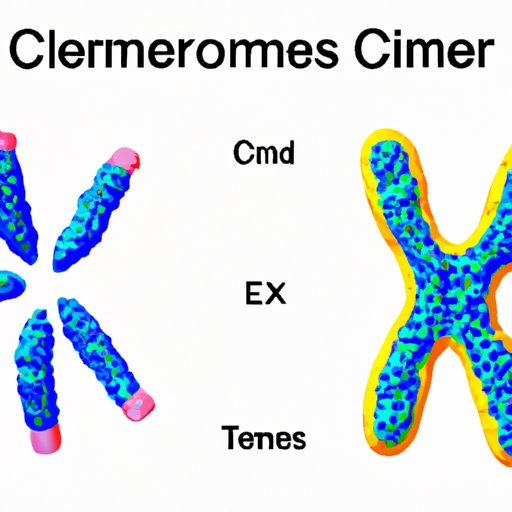I. Introduction
Centromeres are an essential component of chromosomes and play a crucial role in cell division and inheritance. Understanding the structure and function of centromeres is vital for solving problems related to genetic disorders and cancer. In this article, we will explore the mystery and complexity of centromeres, their role in cellular division and inheritance, their evolution, and their links to cancer.
II. Centromeres 101: Understanding the Fundamental Element of Chromosomes
A centromere is a structure that holds sister chromatids together during cell division. It is a region of DNA that is responsible for accurate chromosome segregation. The structure of a centromere is complex and consists of DNA sequences as well as specialized proteins known as kinetochore. The kinetochore is necessary for the binding of microtubules during cell division, which facilitates the separation of chromosomes. Centromeres vary in size and structure across different organisms. For example, human centromeres are large and consist of repetitive DNA sequences, while yeast centromeres are small and contain only one specific DNA sequence.
III. The Role of Centromeres in Cellular Division and Inheritance
Centromeres play a crucial role in mitosis and meiosis and ensure equal chromosome segregation during cell division. During mitosis, each chromosome must be divided equally between two daughter cells. Likewise, during meiosis, a single diploid cell undergoes two rounds of division, resulting in four haploid gamete cells. This process ensures genetic variation in offspring. Without centromeres, the chromosome would not assemble correctly, leading to errors in cell division and genetic disorders.
IV. Exploring Centromeres: How Geneticists are Unraveling the Mysteries of Chromosome Structure
Recent advances in genetic research have helped better understand centromeres and their functions. Scientists study centromeres to determine their location on the chromosome and how they interact with other proteins. Researchers use gene-editing techniques, such as CRISPR, to manipulate centromeres and monitor their effects. Moreover, examination of centromere function has led to discoveries about the regulation of gene expression, chromatin modification, and the cell division cycle.
V. Centromeres and Cancer: How Aberrant Function Leads to Tumorigenesis
Centromeres are often misregulated in various forms of cancer. Research has shown that this is due to centromere instability or dysfunction, which can cause genetic abnormalities and tumor formation. Changes in centromere identity or position can also impact the progression and spread of cancer cells. Consequently, centromeres are used as biomarkers for determining prognosis and developing cancer therapies.
VI. The Evolution of Centromeres: Tracing the Origins and Divergence of Chromosome Segregation Mechanisms
The complexity and variations of centromeres in different organisms have led researchers to believe that their evolution may contribute to genetic diversity. Examining different variations of centromeres has allowed researchers to trace evolutionary pathways and divergence in chromosome segregation mechanisms. Studying the evolution of centromeres has shed light on their functionality in chromosome stability and genomic diversity across species.
VII. Knock-Out Centromeres: Using CRISPR Technology to Investigate the Essentiality of Centromeres in Cell Survival
Geneticists use CRISPR technology to determine the essentiality of centromeres in cell survival. These studies have shown that even a small loss of centromere function can have a catastrophic effect on cell division, leading to cell death. However, recent studies have also shown that cells can survive with abnormal centromere function, highlighting the complexity of their role in cell survival.
VIII. Conclusion
Centromeres play important roles in chromosome segregation and accurate inheritance. Understanding centromeres is crucial for identifying and treating chromosome disorders and cancer. Advances in genetic research have provided deeper insights into the function and evolution of centromeres. Continued study of centromeres will lead to a better understanding of how they contribute to genetic diversity and cell viability.
